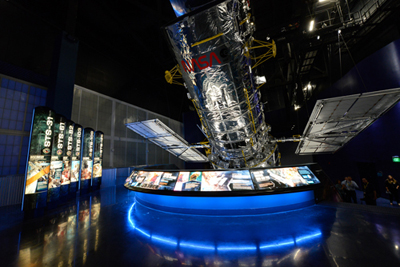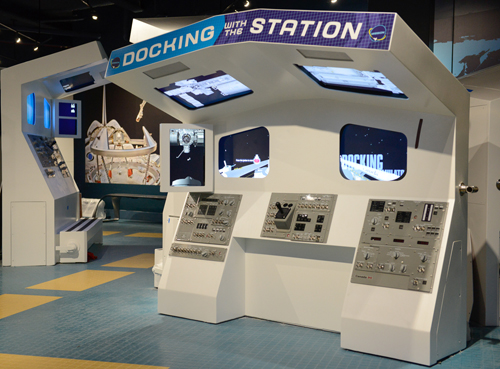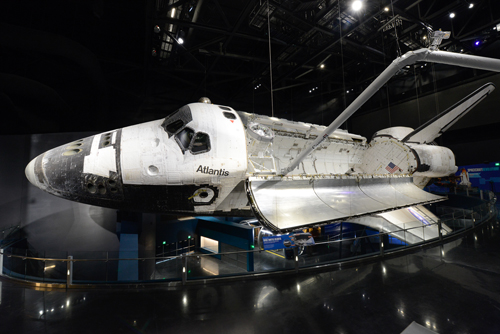

- Space Shuttle Atlantis, the newest attraction at Kennedy Space Center Visitor Complex in Cape Canaveral, Fla., was designed by PGAV and installed by Electrosonic. projectiondesign high-performance projectors are used in the pre-show visitor area and various exhibit areas to engage and entertain audiences
- The story of the Space Shuttle Atlantis attraction dates back to 2010, when Delaware North and PGAV in partnership with NASA designed and created gave PGAV Destinations a simple brief: to design and create the world’s premiere space exploration attraction. PGAV in turn engaged Electrosonic in a four-phase design and consulting process.
- As is now commonplace at big attractions, on entering the building visitors are treated to a multimedia pre-show that provides the historical context for the exhibits they are about to see. The Atlantis pre-show features 4 projectiondesign F35 wqxga video projectors, edge-blended to form an immersive experience, with content being served by individual, multi-head, custom-configured Delta media servers from 7thSense Design.
- 16 projectiondesign F32 projectors, running in 1920 x 1200 resolution and edge-blended in groups of four, are used to add video content for the four ‘arches’ that surround the Shuttle itself.
- projectiondesign F32 projectors are used in Batchling exhibit area and F35 projectors are used in Hubble exhibit areas.
- Launched as the new home of the historic spacecraft that tells the story of NASA’s 30-year Space Shuttle Program, Space Shuttle Atlantis is a 90,000 square foot attraction that has been built at a cost of $100 million, providing the marquee element in the master plan of Delaware North Companies Parks & Resorts, which has operated the Kennedy Space Center Visitor Complex for NASA since 1995.
- Surrounding the Shuttle are state-of-the-art multimedia presentations that incorporate more than 60 interactive exhibits and audio/visual simulators, each of them giving visitors insight into the 33-mission career of Atlantis, which included the launch and maintenance of the Hubble Space Telescope as well as the building of the ISS.
